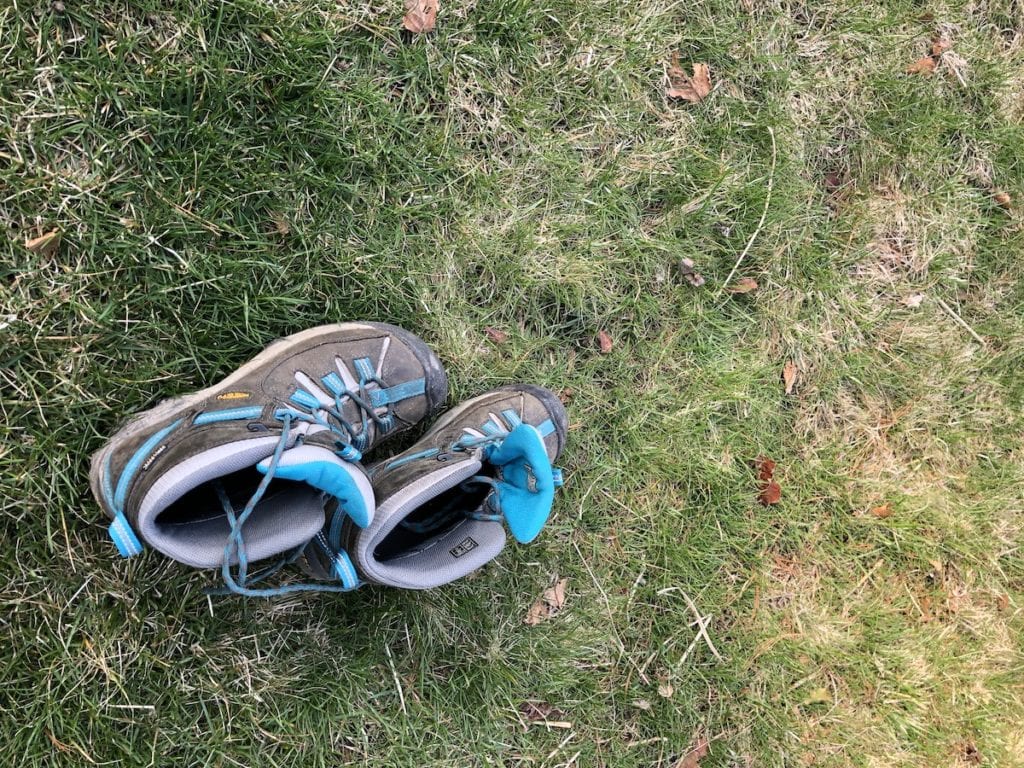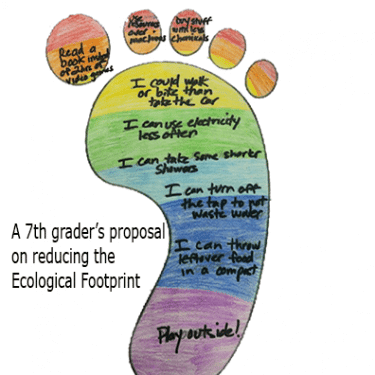
Nature In The Middle (grades 6-8)
This Week’s Topic: In Search of Bigfoot…
Ok, spoiler alert. Bigfoot isn’t real; or at least I’ve not seen any credible scientific evidence to support its existence. Sorry to be a party pooper!
I’ll admit that the idea of a creature like Bigfoot existing in the wild is intriguing, but something that would take up that much space would be hard to miss, or would it? You may recall the story of the “North Pond Hermit” here in Maine a few years back. The hermit, Chris Knight, lived alone in the woods of Central Maine for almost thirty years! But he wasn’t completely invisible. Neighbors knew he was there by the items from their camps that went missing from time to time. So, it’s impossible to exist without leaving some trace or impact on your environment.
We all leave impacts on our environment and some are more visible than others. The concept of an Ecological Footprint has been used to measure the overall human impacts and demands on our Earth. So, this week I’m giving you all the challenge to measure your own ecological footprint. Curious about what size your footprint is? Read on!
Measuring your ecological footprint is a great science activity, and one you can do right from your home. There are a number of online sites where you can find calculators to do this; the one that I like best is by the Global Footprint Network (www.footprintcalculator.org) You can use a smartphone or a computer to do this. The calculator tells you how many Earths would be required if everyone on the planet lived like you, and then suggests ways to reduce your Ecological Footprint and help the environment. In the interest of full disclosure, my own footprint calculates to 2.7 (that’s how many Earths would be needed if everyone lived like me!). The largest percentage of my impact comes from my daily round-trip work commute of 50 miles (clearly, I need to find ways to lower this number…maybe an electric car is in my future!)
With Earth Day coming right up in just a week, now would be a great time to make a list of activities that would help reduce your ecological footprint. Here is one example from a 7th-grade student:
Activity/Challenge: Make your own footprint solutions and display them somewhere in your home as a helpful reminder of things you can do to tread more lightly on the planet.
The Global Footprint Network site is loaded with data that you can analyze. You can compare the ecological footprints of countries all over the world, compare the biocapacity vs. average footprint per person, and look at trends over many decades. Understanding how to use data to make comparisons is an important part of communicating through science.
I don’t know about you, but my feet are feeling pretty big right now! But as they say, “knowledge is power,” and now that I know where I stand, I can start to get to work at shrinking my footprint.
Note to Teachers: Having your students calculate and analyze data with this online tool fits well with many of the NGSS science practices. Specifically, check out the following standards: LS2-3, ESS3-4.
Maine Audubon’s mission is to conserve Maine’s wildlife and wildlife habitat by engaging people in education, conservation, and action. Today, that mission seems more important than ever. Our educators, scientists, advocates, and naturalists are committed to keeping you connected to the natural world as we deal with the coronavirus situation together. Check in every weekday on our Connections page for family activities, parent/teacher tips, backyard birding, nature exploration at our sanctuaries, and more.

